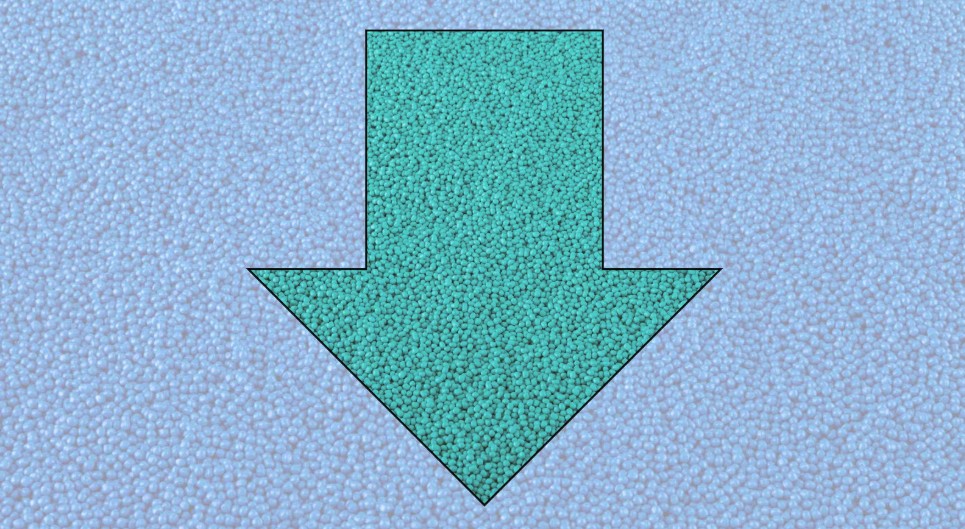Market trends
A new wave of growth for 3D printing
작성자 : Aeyoung Park
2018-08-08 |
조회 : 4679
The 3D printing market is emerging from niche market and expected to grow at a swift pace. In light of the huge business opportunities, some notorious companies have started to boost their presence in the market. 3D printing market is hot and getting hotter!





3D printing, also known as additive manufacturing, promises a range of potential benefits and innovation opportunities, offering major advantages such as shorter lead time, design freedom, and lower costs. Thanks to rapid technological developments facilitating wider applications, it is creating more interest among mainstream industries.
Worldwide spending on 3D printing is set to grow
The global spending on 3D printing (including hardware, materials, software, and services) will be nearly US$12.0 billion in 2018, an increase of 19.9% over 2017, according to the new update to the Worldwide Semiannual 3D Printing Spending Guide from International Data Corporation (IDC).
By 2021, IDC expects worldwide spending to be nearly US$20.0 billion with a five-year compound annual growth rate (CAGR) of 20.5%. Together, 3D printers and materials will account for roughly two thirds of the worldwide spending total throughout the forecast, reaching $6.9 billion and $6.7 billion respectively in 2021.
Services spending will trail slightly behind, reaching US $5.5 billion in 2021 and led by on-demand parts services and systems integration services. Purchases of 3D printing software will grow more slowly than the overall market with a five-year CAGR of 18.6%.
According to the report, the US will be the region with the largest spending total in 2018 (US$4.1 billion) followed by Western Europe (US$3.5 billion). Together, these two regions will provide nearly two thirds of all 3D printing spending throughout the forecast.
On the other hand, China will be the third largest region with more than US$1.5 billion in spending this year, followed by Central and Eastern Europe (CEE), the Middle East and Africa (MEA), and the rest of Asia/Pacific (excluding Japan).
Discrete and healthcare manufacturers to be prevailing spenders
The 3D printing industry recently has witnessed a shift to more specialized applications with printer manufacturers targeting engineering groups directly linked to specific applications.
As stated in the report from IDC, discrete manufacturing will be the dominant industry for 3D printing, delivering more than half of all worldwide spending throughout the 2017-2021 forecast. Healthcare providers will be the second largest industry with a spending total of nearly US$1.3 billion in 2018.
Parts for new products, aftermarket parts, dental and medical support objects will continue to see significant growth opportunities over the next five years as 3D printing goes more mainstream.
The healthcare industry is also poised to double its share of spend through 2021 as the benefits of cost-effective customized printing continue to be realized, according to Marianne D'Aquila, research manager, Customer Insights and Analysis at IDC.
The leading use cases for 3D printing are prototypes, aftermarket parts, and parts for new products. As the primary use cases for the discrete manufacturing industry, these three use cases will account for 44% of worldwide spending in 2018.
By 2021, dental objects and medical support objects will be the fourth and fifth largest use cases, largely driven by the healthcare provider industry. The two use cases that will see the fastest spending growth are tissue/organ/bone (56.6% CAGR) and dental objects (36.9% CAGR), which will also be driven by healthcare provider spending.
Latest partnerships and investments for further development
In April, both leading materials suppliers Royal DSM and Covestro announced their new partnerships for further development in the 3D printing market.
Royal DSM will partner with Chromatic 3D Materials to introduce thermoset materials for 3D-printing of finished manufactured goods.
Chromatic 3D is one of the few companies that know how to develop technologies to 3D-print with thermosets, a broad class of materials offering adaptability, durability and resilience not possible with thermoplastics used in conventional 3D printing processes.
Initial products to be rolled out by DSM include industrial-grade soft and durable thermosets, which are complementary to DSM’s current portfolio of thermoplastics for fused filament fabrication (FFF).
Starting immediately, the companies will build a broader portfolio based on customer needs in the strategic markets of footwear (in- and midsoles), transportation (such as in the growing area of automotive electronics), healthcare, electronics and tooling.
Material development is moving in a similar direction as both printer and material manufacturers create the perfect conditions for the reliability and repeatability demanded by industrial users. This means that more specific data and process knowledge is needed to drive 3D printing into mainstream manufacturing.
Covestro and its partner Polymaker launched a website, namely 3DPC (www.3dprintingpc.com), designed to aid the use of polycarbonate in 3D printing. The information platform offers know-how on 3D printing with polycarbonates - from material options to printing conditions.
3DPC demonstrates the optimal printing and processing techniques to further penetrate polycarbonate into new industries and dynamic applications.
Three months earlier, Siemensannounced the plan to make a €30 million investment in a new, state-of-the-art manufacturing facility for Materials Solutions Ltd., its additive manufacturing (3D printing) specialist.
The new building in Worcester, UK, set to open in September this year, will more than double the company's current footprint, enabling it to increase its fleet of 3D-printing machines to 50.
This major investment is part of Siemens' plans to build and grow a global business with additivemanufacturing services for the aerospace, automotive and other industries.
The new factory will be fully powered by Siemens Digital Enterprise solutions, an end-to-end portfolio comprising software-based systems and automation components which cover every conceivable requirement arising along the industrial value chain. It will therefore harness the potential of digitalization.
Siemens is leading not only as a user of 3D printing but also as a supplier of software and solutions for the automation of this technology. With Materials Solutions, the company also offers comprehensive services for engineering and printing up to the complete manufacturing of parts for external customers.
In order to uplift its capability in developing and testing solutions for customers, BASF has established two 3D printing labs at the BASF Innovation Campus Shanghai, China, along with its 3D Printing Application Technology Center in Heidelberg, Germany.
BASF also launched a wide range of industrial 3D printing solutions in Asia Pacific to satisfy the growing demand in the region in early 2018. These new solutions can help vastly accelerate development cycles by enabling the production of complex parts and allow individual designs, while reducing costs for small scale production.
Advanced products on stage in major exhibitions
The 3D printing market is poised to expand further and this trend was also very much in evidence at some recent major exhibitions, included CHINAPLAS in Shanghai, China and NPE in Orlando, the US. Some material suppliers highlighted their advanced solutions at these shows.
With the 3D-printed surf board and 3D-printed shoe soles, the LEHVOSS Group put the spotlight on its innovative and customized polymers for 3D printing at CHINAPLAS 2018.
Under the trade name LUVOCOM 3F, the surf board is made from customized 3D printing materials that based on thermoplastic polymers, such as high performance polyamides and PEEK. The materials are modified to yield improved layer strength with no warping of the printed parts.
The 3D-printed shoe soles are made from LUVOSINT TPU X92A-2, a special material for laser sintering. Laser sintering is a technique for the additive production of plastic components. The layered structure offers a level of design freedom, as well as engineering opportunities that cannot be achieved with injection molding and other techniques.
At NPE 2018, SABICintroduced three new FDM 3D printing filaments. The materials were designed for general high-temperature and healthcare applications.
The launch of additional filament products, together with plans to continue expanding its additive manufacturing product portfolio, demonstrating SABIC’s determination to further the evolution of this technology and enable application innovation.
Having only entered the additive manufacturing industry in the spring of 2017, the three new products represent the third wave of 3D printing materials the chemicals specialist has brought to market.
Source: CPRJ International




















